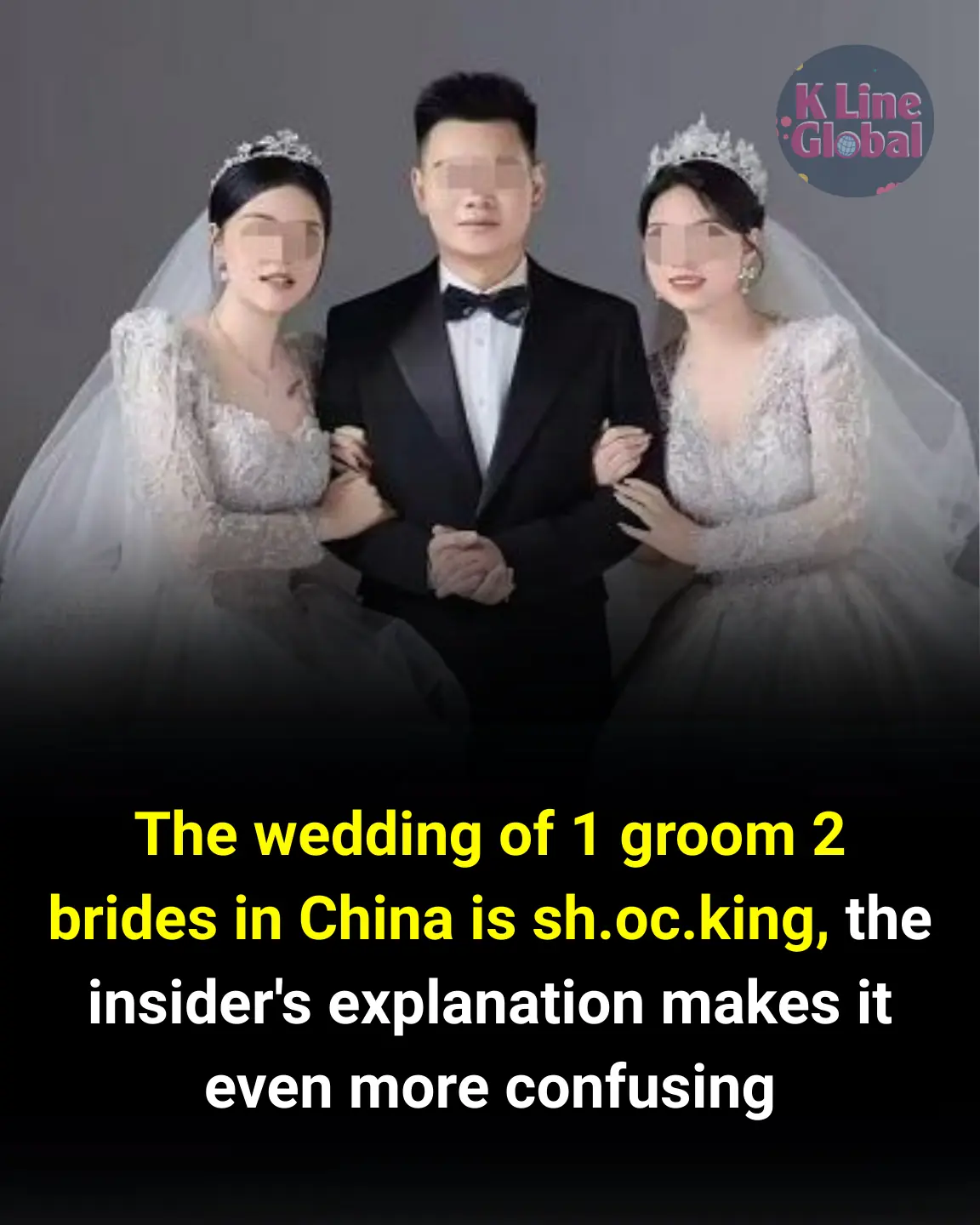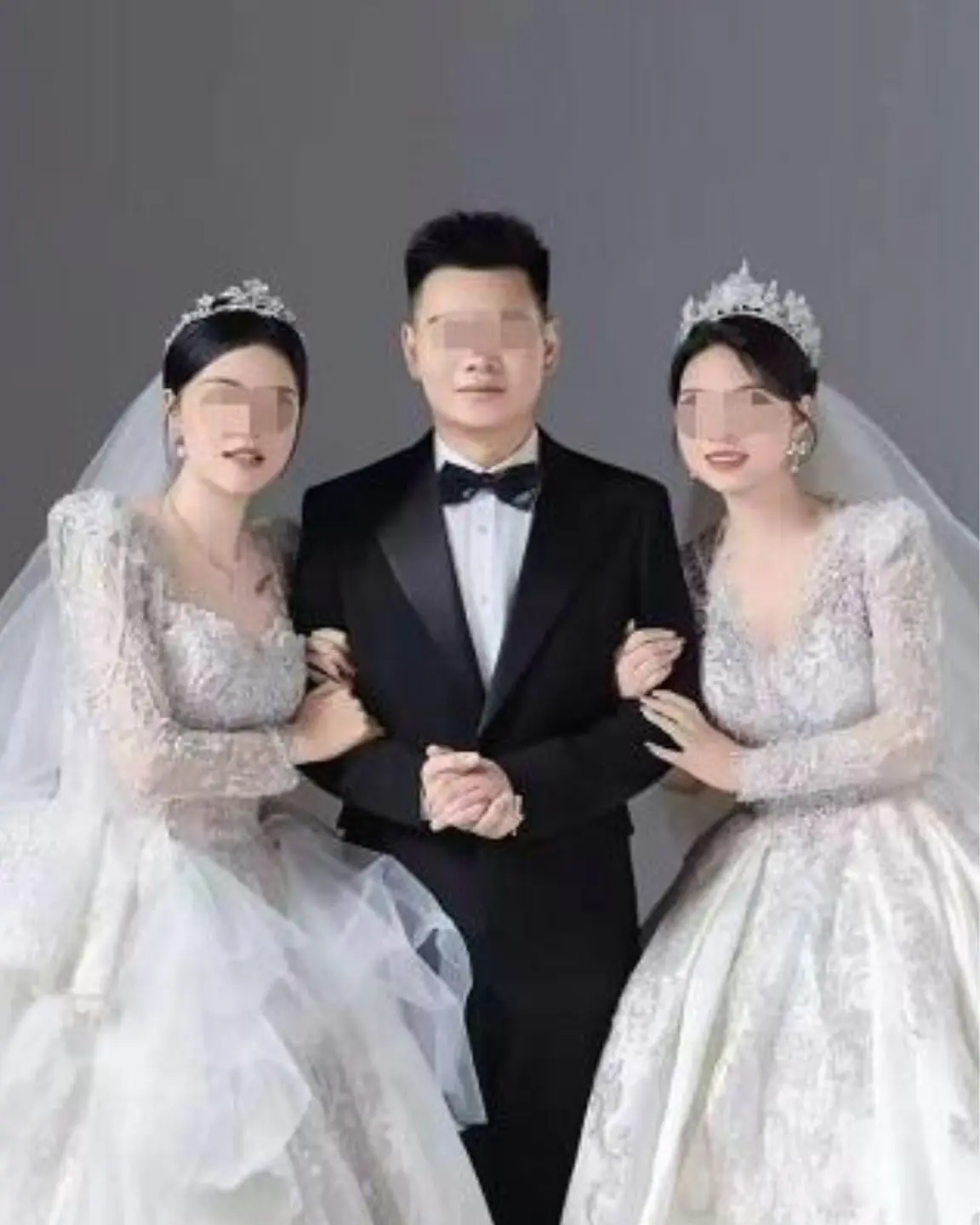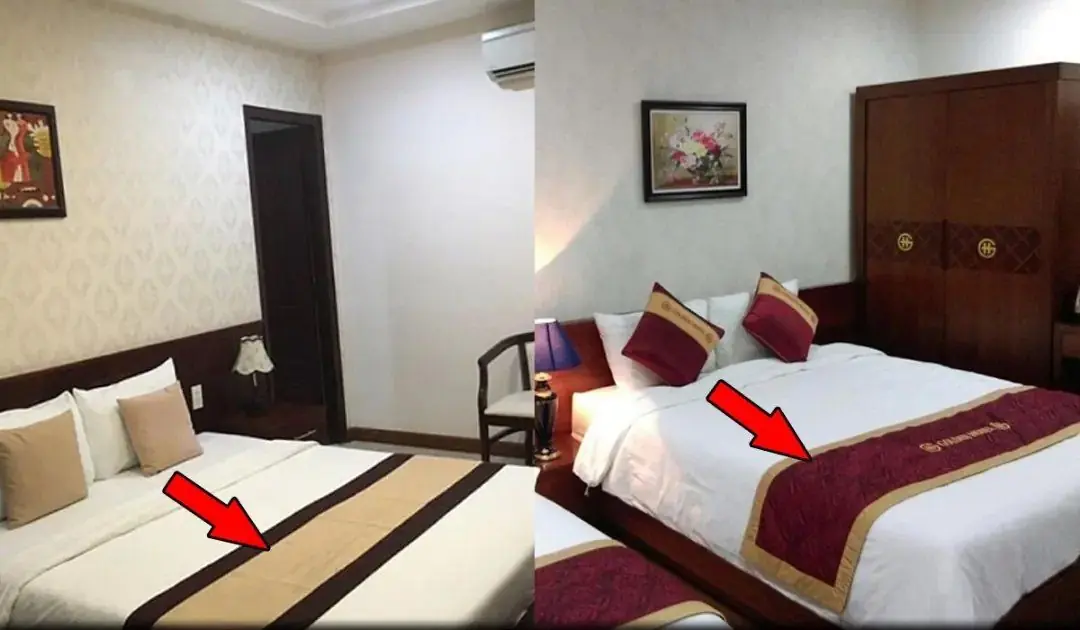
Recently, a man in Bijie City, Guizhou Province (China) after posting his wedding invitation on social media became the center of discussion among netizens. Notably, the wedding invitation has a picture of the groom and two brides in wedding attire, along with the words "Welcome to our wedding". This image immediately caused a lot of heated debate.
Wedding invitation with a shocking picture of 1 groom and 2 brides.

According to information from the wedding center The Century Giai Duyen (the venue for the wedding on April 19), when they initially received the request to book a party, they were not informed that this was a "special" wedding with three people. After the incident spread online, the center learned the truth and reviewed the contract. Based on the monogamous marriage law stipulated in the Chinese Civil Code, the wedding center decided to cancel the party because it believed that this three-person wedding was against moral values and the law.
Local authorities later stepped in to verify. The person involved explained that one of the two women appearing in the photo was the groom's ex-wife. Taking wedding photos together was considered a "joking" act by all three. Although taking wedding photos together does not violate the law, under the advice of the police, the three decided to cancel the plan to hold this "combined" wedding. Instead, the wedding will only have two main characters as usual, including the groom and his new fiancée.
The incident also attracted the attention of legal scholars. According to the analysis of the Law Academy, Jiangnan University, the behavior of these three people, although controversial, is not enough to conclude that they violated the law. Because the three only performed the wedding ceremony and took photos without registering their marriage, legally, this relationship is not recognized as a marriage and does not violate the monogamy regime. However, organizing a wedding in such a form, especially after being made public on social networks, has negatively impacted social values and can be considered a violation of the principles of good customs.










































